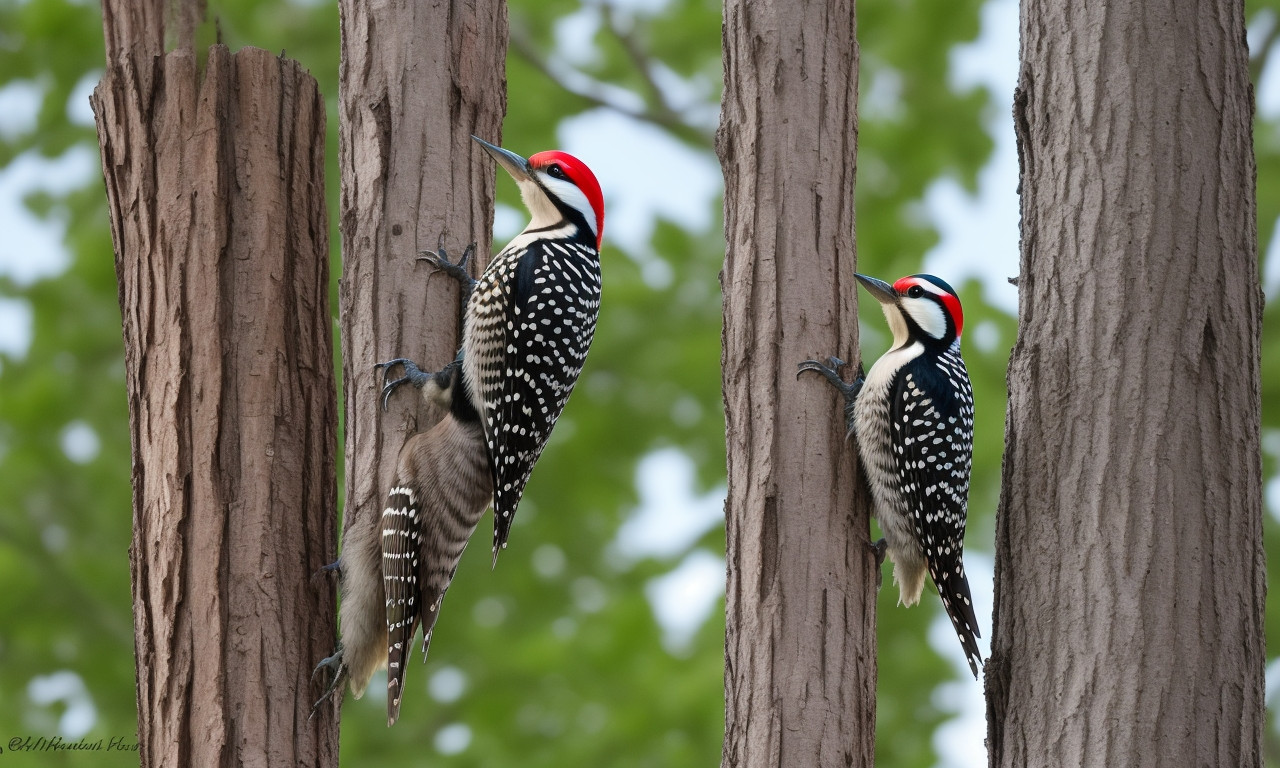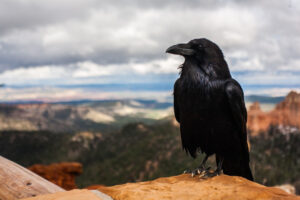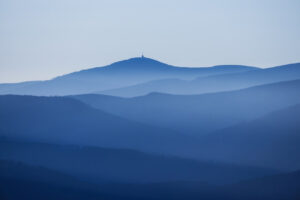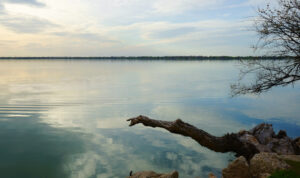Michigan, known for its magnificent Great Lakes and lush forests, is a melody of sounds and sights that captures the essence of nature at its finest. Among the chirping of songbirds and rustling of leaves, there’s a distinctive rhythm that punctuates the natural orchestra—the drumming of woodpeckers. These rhythmic residents offer a window into the vibrant heartbeat of Michigan’s wildlife, integral to both the ecological balance and the symphony of the woods.
In this expansive journey through the groves and the canopies, we will delve deep into the world of Michigan’s woodpeckers. Meet the cast of characters that hammer away in the backdrop of the Great Lakes State, and learn about their habits, habitats, and the roles they play in safeguarding the health of our forests.
The Woodpeckers of Michigan: A Diverse Ensemble
Michigan’s woodlands are home to an array of woodpecker species, each one contributing its unique patterns to the forest’s rhythm. From the mighty Pileated Woodpecker to the diminutive Downy, these birds are fascinating to observe and crucial for maintaining a balanced ecosystem.
Related article; Why Do Owls Hoot? How, When, and Where Owls Hoot
The Iconic Pileated Woodpecker
The Pileated Woodpecker stands as the largest woodpecker in Michigan, often recognized by its striking black and white plumage and brilliant red crest. Its presence is announced not just by its grand size but by the powerful, reverberating knocks as it searches for insects beneath the bark of dead and decaying trees.
Related article; Types of Florida Beach Birds
The Industrious Hairy Woodpecker
Visually similar to its smaller cousin, the Downy Woodpecker, the Hairy Woodpecker is renowned for its robust bill, which it adeptly uses to excavate insects and grubs. It prefers mature forests where it can often be found tapping at tree trunks, its signature sound echoing across the woodland.
Related article; Why are Birds So Loud in the Morning?
The Dainty Downy Woodpecker
Charming and accessible, the Downy Woodpecker is a perennial favorite among birdwatchers. The smallest of Michigan’s woodpeckers, it can be identified by its delicate tapping— a gentle rhythm in the greater symphony of the outdoors.
Related article; The Camp Robber Bird
The Regal Red-Bellied Woodpecker
With its strikingly barred back and namesake red belly, the Red-Bellied Woodpecker brings a splash of color to the Michigan woods. Its rolling call and sharp "churr" resonates throughout its range, signalling its territory with a definitive, musical flair.
Related article; Black Palm Cockatoo
The Migratory Yellow-Bellied Sapsucker
Vivid and nomadic, the Yellow-Bellied Sapsucker frequents Michigan during its breeding season. Known for its habit of drilling orderly rows of sap wells in trees, this species leaves behind a legacy that benefits other birds and insects long after it has moved on.
Related article; The Most Amazing Birds in Virginia!
The Vanishing Red-Headed Woodpecker
Once common, the Red-Headed Woodpecker is a spectacular sight, with a crimson head that sets it apart from its peers. Due to habitat loss and competition, its numbers are waning, making each sighting in Michigan a rare and precious event.
Related article; Amazing Green Birds
Habitats and Habits: The Woodpeckers’ Realm
Woodpeckers thrive in diverse habitats across Michigan, from the dense deciduous forests in the south to the sprawling coniferous woodlands in the north. Each species has carved out a niche where it can hunt, reproduce, and flourish.
Related article; huitlacoche bird habitat
The Forests They Favor
Michigan’s woodpeckers utilize a range of forest types:
- Deciduous woods for the Downy and Red-Bellied Woodpeckers
- Coniferous stands for the Hairy Woodpecker
- Mixed forests for the adaptive Pileated Woodpecker
Nesting Neatness
Woodpeckers are master carpenters, chiseling out cavity nests that serve as safe havens for raising their young. The craftsmanship of these nests also benefits other cavity-nesting wildlife after the woodpeckers vacate them, showcasing an exquisite balance in nature.
Diet and Foraging: An Insectivorous Appetite
Primarily insectivorous, woodpeckers feast on a buffet of ants, beetles, and larvae that they unearth from under the bark or within the wood. This relentless pursuit for food controls insect populations and contributes to forest health.
Seasonal Behaviors: Understanding the Woodpecker’s Calendar
Woodpeckers in Michigan display a fascinating array of seasonal behaviors, from their springtime courtship drumming to their wintertime survival strategies.
The Spring Symphony: Mating Rituals and Territory
As the snow melts, woodpeckers engage in vigorous drumming to attract mates and establish territories. This period is marked by increased visibility and activity, with the forests echoing their rhythmic calls.
Summer Growth: Nesting and Brooding
With nests built, summer ushers in a focus on brooding and raising chicks. Woodpecker parents are tirelessly active, feeding their growing broods and teaching them the ways of the woods.
Autumn Preparations: Caching Food and Maintaining Territory
As autumn arrives, woodpeckers may cache food for the colder months ahead. Some species, like the Yellow-Bellied Sapsucker, prepare for migration, while others, such as the Pileated Woodpecker, maintain a year-round presence.
Winter Survival: Adaptability and Resilience
During Michigan’s frigid winters, woodpeckers demonstrate remarkable adaptability. Their insulating feathers and strategic foraging help them survive the biting cold as they continue to be active and visible even on the snowiest days.
Conservation and Challenges: Securing the Future of Michigan’s Woodpeckers
Despite their adaptability, Michigan’s woodpeckers face threats from habitat loss, climate change, and competition for nesting sites. Conservation efforts and sustainable practices are crucial to ensuring that these compelling creatures remain a vital part of Michigan’s landscape.
Habitat Preservation: The Key to Woodpecker Wellbeing
Protecting the natural forests and wooded areas is paramount for the survival of woodpecker populations. Efforts to conserve these spaces benefit not only woodpeckers but the myriad other species that share their habitat.
Climate Change: An Uncertain Impact
Climate change poses a complicated challenge, with its potential to alter habitats and the availability of food sources. Understanding and mitigating these impacts is essential to protect the delicate balance of the forest ecosystem.
Coexisting with Humans: The Role of Awareness
As humans, our actions have a profound impact on the health of woodpecker populations. Fostering an appreciation and understanding of these birds can lead to more mindful practices that ensure their continued vibrancy.
Enjoying Michigan’s Woodpeckers Responsibly: A Birder’s Guide
For bird enthusiasts and casual nature lovers alike, observing Michigan’s woodpeckers in their natural habitat can be a rewarding experience. Responsible birdwatching practices ensure both the enjoyment of observers and the safety of the birds.
Tips for Ethical Birdwatching
- Use binoculars to keep a respectful distance.
- Avoid disturbing nests or feeding sites.
- Be mindful of noise levels to prevent stressing the birds.
- Stay on designated trails to minimize habitat disruption.
Creating Woodpecker-Friendly Environments
Homeowners can contribute to woodpecker conservation by:
- Planting native trees to provide natural food sources and nesting sites.
- Installing bird feeders stocked with suet or nuts to supplement their diets.
- Leaving dead trees standing when safe to do so, as they offer prime real estate for woodpecker homes.
Reflections on the Rhythmic Residents: Michigan’s Woodpeckers and Beyond
Michigan’s woodpeckers are more than just quirky neighbors with a penchant for percussion. They are sculptors of the forest, artists of the air, and guardians of an intricate ecological web. By protecting and cherishing these feathery friends, we not only ensure their survival but also secure a more vibrant and harmonious future for Michigan’s wild places and for ourselves.
In conclusion, the woodpeckers of Michigan are a testament to nature’s ability to enchant, to inspire, and to teach. As the drums of the woodpeckers continue to beat, may we listen closely and act conscientiously to preserve the beautiful and rhythmic cadence of the Great Lakes State.




